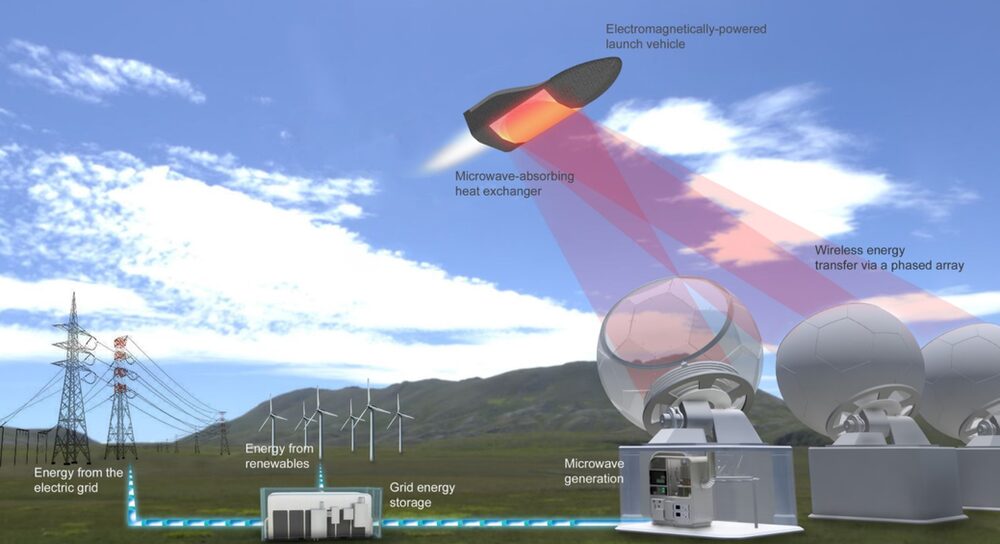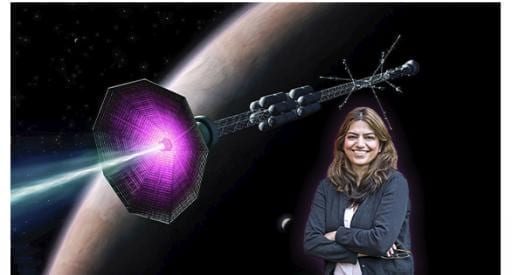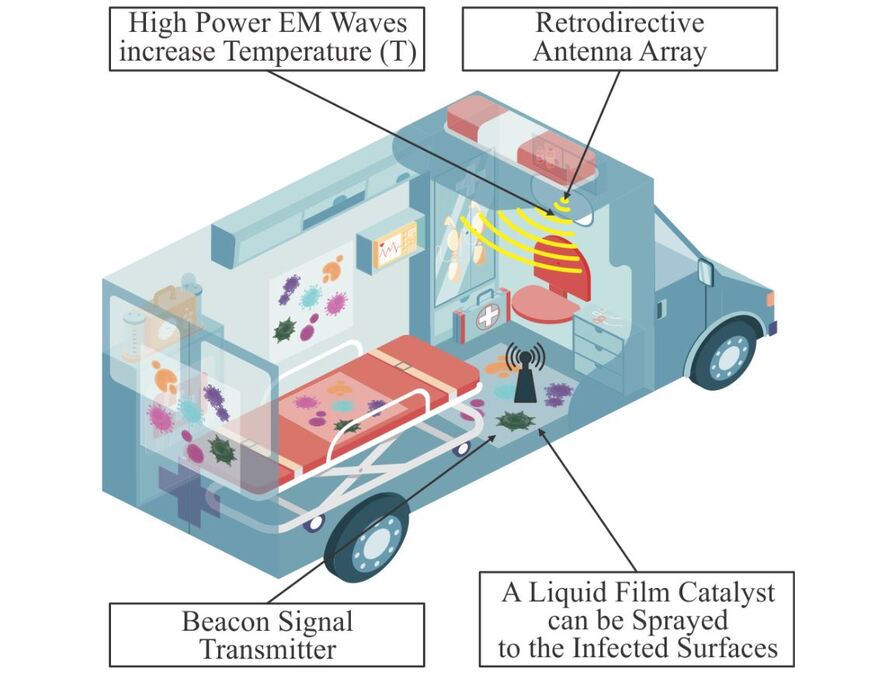
via Flipboard
Researchers led by the University of Tsukuba explore the possibility of launching rockets using a high-power beam of microwave radiation
Sending a rocket into space typically requires about 90% of the rocket’s initial weight to be fuel. This limitation could be overcome by wirelessly transmitting the needed power to the rocket through a beam of microwave radiation. A research team from Japan has investigated the viability of using such microwave-powered propulsion for real-world applications.
In a study published this month in the Journal of Spacecraft and Rockets, researchers led by the University of Tsukuba have demonstrated wireless power transmission via microwaves for a free-flying drone and determined the efficiency of this process.
Previous analyses of this kind were carried out decades ago and mostly considered microwaves of a low frequency (a few gigahertz; GHz). Given that the power transmission efficiency increases as the operating frequency is raised, the team behind this latest research used microwaves with a relatively high frequency (28 GHz). The team’s drone weighed roughly 0.4 kilograms and hovered for 30 seconds at a height of 0.8 meters above the source of the microwave beam.
“We used a sophisticated beam-tracking system to ensure that the drone received as much of the microwave power as possible,” says Kohei Shimamura, lead author of the study. “Moreover, to further increase the transmission efficiency, we carefully tuned the phase of the microwaves using an analog phase shifter that was synchronized with GPS units.”
The researchers measured the efficiencies of the power transfer through the beam (4%), the capture of microwaves by the drone (30%), the conversion of microwaves to electricity for propulsion (40%), and other relevant processes. Based on this information and an analytical formula, they calculated the overall power transmission efficiency in their experiment to be 0.43%. For comparison, in a previous study, the team measured the total transmission efficiency for a fixed-position (rather than free-flying) drone to be 0.1%.
“These results show that more work is needed to improve the transmission efficiency and thoroughly evaluate the feasibility of this propulsion approach for aircraft, spacecraft, and rockets,” explains Shimamura. “Future studies should also aim to refine the beam-tracking system and increase the transmission distance beyond that demonstrated in our experiment.”
Although microwave-powered rocket propulsion is still in its early stages, it could someday become a superior way to launch rockets into orbit given the high onboard-fuel demands of conventional propulsion techniques.
Original Article: Microwave-Powered Rocket Propulsion Gets a Boost
More from: University of Tsukuba
The Latest Updates from Bing News & Google News
Go deeper with Bing News on:
Microwave-powered propulsion
- NASA's solar sail phones home before attempting revolutionary sunlight propulsion
The rocket delivered the microwave-sized CubeSat to Sun-synchronous ... Once unfurled the solar sail will test sunlight propulsion, or the means of using photons as a way of moving around in ...
- Best microwave brands in April 2024: Top 10 picks of high quality appliances that are perfect for families
When selecting the best microwave, it's crucial to consider factors like power settings, pre-programmed features, ease of cleaning, and energy efficiency. Today's top brands are integrating ...
- NASA's Massive Solar Sail System Successfully Deployed In Space; Why It's Game-Changing
NASA confirmed on Thursday that its Advanced Composite Solar Sail System has been successfully deployed. It was launched by Rocket Lab from New Zealand's Mahia peninsula on April 24 to test a ...
- Liftoff! NASA’s Next-Generation Solar Sail Boom Technology Launched
NASA’s Advanced Composite Solar Sail System Mission is on its way! The spacecraft lifted off from the launch pad aboard Rocket Lab’s Electron rocket at the company’s Launch Complex 1 in Māhia, New ...
- NASA's "next-gen" solar sail spacecraft is ready to launch for practical testing
The Advanced Composite Solar Sail System (ACS3) is a newly designed satellite meant to test the deployment of the solar-powered propulsion ... about the size of a microwave oven.
Go deeper with Google Headlines on:
Microwave-powered propulsion
[google_news title=”” keyword=”microwave-powered propulsion” num_posts=”5″ blurb_length=”0″ show_thumb=”left”]
Go deeper with Bing News on:
Wireless power transmission via microwaves
- Japanese satellite will beam solar power to Earth in 2025
The accumulated energy will then be transformed into microwaves and beamed ... The researchers have already demonstrated wireless transmission of solar power on the ground from a stationary ...
- Solar farms in space may get real after tests on wireless energy beam
Solar farms in space are not quite science fiction anymore, after researchers at Queen’s University in Belfast tested a prototype that was able to “steer” a wireless energy beam across a lab ...
- If You’re Not Using This Microwave Button, You Need to Start
One reason people are hesitant to use the microwave to its fullest is that they aren’t fully comfortable with all the features—and at the top of this list is the power-level button (though the ...
- Wireless future drives microwave photonics
Microwave photonics is the vibrant and somewhat niche field that marries the high-frequency and analog nature of radio signals with the low-power requirements and better processing capabilities of ...
- International Journal of Microwave and Wireless Technologies
This journal utilises an Online Peer Review Service (OPRS) for submissions. By clicking "Continue" you will be taken to our partner site https://mc.manuscriptcentral ...
Go deeper with Google Headlines on:
Wireless power transmission via microwaves
[google_news title=”” keyword=”wireless power transmission via microwaves” num_posts=”5″ blurb_length=”0″ show_thumb=”left”]










